MARKETING
The State of Content Marketing in 2022 [Stats & Trends to Watch]
![The State of Content Marketing in 2022 [Stats & Trends to Watch] The State of Content Marketing in 2022 [Stats & Trends to Watch]](https://articles.entireweb.com/wp-content/uploads/2022/03/The-State-of-Content-Marketing-in-2022-Stats-Trends.jpgkeepProtocol.jpeg)
Content marketing is the process of planning, creating, and sharing content with your target audience. It helps you generate brand awareness, convince customers to take action, and drive revenue.
There are various types of content marketing, like social media and blogs, but new trends and techniques emerge every year that change the ways businesses reach their audiences.
As a marketer, it’s essential to know what your competitors are focusing on, so you can create a strategy and stand out from the crowd. In this post, discover important stats to know about the state of content marketing in 2022 and trends to look out for throughout the year.
Content Marketing Stats to Know
- 90% of marketers using content marketing plan to continue investing the same amount in the channel in 2022.
- 66% of marketers expect their 2022 content marketing budget to increase more than their 2021 budget.
- Over 60% of marketers measure the success of their content marketing strategy through sales.
- Marketers’ primary goals for running marketing campaigns are brand awareness, increasing sales, and increasing engagement.
- The top three goals marketers achieve through successful content marketing are generating brand awareness, building credibility and trust, and educating audiences.
- The top challenges marketers face with content marketing are creating content that generates leads, finding ideas for new content, and creating content that receives high levels of online engagement.
- Google’s search algorithms are trying to transcend text to images, voice/podcasts, and videos.
- Video is the number one format marketers used in their content strategy in 2021.
- The top four formats marketers leverage in their content strategy are videos, blogs, images, and infographics.
- The top technologies B2B organizations use to supplement content marketing are analytics tools, social media publishing, and email marketing software.
- The top three owned mediacontent distribution channels for B2B marketers are a personal website, blog, and email newsletter..
Content Marketing Trends to Watch in 2022
1. Short-form video takes center stage.
The amount of online video watched per person per week has almost doubled since 2018, according to Wistia. As of 2021, it’s at 18 hours per week.
![The State of Content Marketing in 2022 [Stats & Trends to Watch] graph displaying that the average hours of video watched online per week is 18 hours](https://articles.entireweb.com/wp-content/uploads/2022/03/The-State-of-Content-Marketing-in-2022-Stats-Trends.png)
This consumer behavior has made video, short-form specifically, the primary form of media used within any content strategy for the third year in a row. As such, 89% of marketers plan to continue investing the same amount in the channel or increase their investments in 2022.
The videos you decide to create and the places you choose to share them depends entirely on your individual business needs, but your efforts will be worthwhile, as Wistia found that shorter videos have the highest engagement rates.
2. Strategic SEO tactics.
In 2020, HubSpot VP of Marketing Matthew Howells-Barby said he wanted to see the number of marketers actively investing in SEO go up. His wish came true — 69% of marketers reported investing in SEO in 2021, a 5% increase from 2020. Marketers are continuing to make SEO investments in 2022 to create tailored experiences for website users.
However, content marketers are moving away from SEO optimization in general, as 83% of marketers say that their main area of focus is the use of strategic keywords in their content. Businesses are looking for a way to simply appear in SERPs and create in-depth content that is unique, valuable, and different from what competitors offer on those same result pages.
Marketers also report that their SEO content marketing efforts will involve optimizing for mobile (64%), and backlinking and link building (64%).
3. Podcasting upholds its reign.
Podcasts continue to hold court in content marketing strategies in 2022. This is not surprising, considering that U.S. consumers alone listened to 15 billion hours of podcasts in 2021.
As a result,
- 51% of content marketers who already leverage podcasts or other audio content will invest more in 2022, and 43% plan to continue investing the same amount.
- 53% of content marketers who do leverage podcasts and other audio content say it’s the most effective format they use, despite low ROI.
So, why are podcasts so popular? On the consumer side, there is something for everyone. With 72,000 new episodes per day (as shown in the graph below), the likelihood of finding a show that appeals to their interests is incredibly high, whether it’s a mystery tale or a real-life story about how their favorite business was built.
Businesses are investing in podcasts because they bring significant benefits: “Podcasts have the ability to drive real results and pay off in terms of leads and revenue,” says Zachary Bellinger, CRO at Casted. 60% of podcast listeners searched for a product after hearing about it in a podcast.
It’s also worth noting that 44% of content marketers are branching out into a new form of audio in their content marketing strategies in 2022 — audio chat rooms.
While a newer concept, the investment in audio chat rooms makes sense, as they create a space for businesses to connect with audiences for genuine conversation and engagement. You can read this article about Clubhouse and this one about Twitter Spaces to learn more about the emerging channel and how other brands are using them in 2022.
4. Championing social responsibility.
Social responsibility will become a critical priority for content marketers in 2022, as customers care now, more than ever, about brands sharing their same values and speaking authentically and empathetically about things like social justice issues or the fair treatment of their employees.
Marketers are recognizing how much customers care, and 82% are investing the same or increasing their investment in social responsibility in 2022.
It’s important to be aware, though, that if you leverage social responsibility in your content marketing efforts, your entire business must champion social responsibility as well, and be genuine about it.
Take Glossier, for example. In June of 2020, the company regularly shared content on its Instagram page that centered people from different communities. However, in August of 2020, an Instagram account called Outta The Gloss posted an open letter to Glossier from former employees that made light of instances of unfair treatment while working at Glossier’s flagship store.
![The State of Content Marketing in 2022 [Stats & Trends to Watch] glossier](https://articles.entireweb.com/wp-content/uploads/2022/03/1648589691_326_The-State-of-Content-Marketing-in-2022-Stats-Trends.jpg)
The former employees weren’t hoping to drag Glossier through the mud, but more so call attention to the fact that, if it champions social responsibility in its content, it must also uphold similar values in its business practices.
It boils down to this: consumers want businesses to be socially responsible, but they want the social responsibility reflected in all areas of business, from the content you post on social media to the ways you support and uplift your employees.
5. Virtual and hybrid events.
A webinar is a video presentation, seminar, lecture, or workshop delivered to an audience digitally. Despite once being declared outdated, webinars and virtual events have become extremely popular over the last three years, and, as COVID-19 restrictions cease, they welcome hybrid models into the mix.
Attending events digitally allows consumers to continue to interact with their favorite businesses and derive value from presents and industry leaders. Hybrid offers the same benefit, as consumers can pick what works best for their needs, and businesses can ensure that all of their audiences can participate in what they offer. 30% of Content Marketing Institute survey respondents say that their investment in hybrid events is expected to increase, and 40% of marketers plan to increase their investment in virtual events, webinars, and conferences in general in 2022.
HubSpot’s annual INBOUND conference is a great example of a hybrid-modeled event, offering the option for attendees to attend in-person, or online.
![The State of Content Marketing in 2022 [Stats & Trends to Watch] inbound 2022](https://articles.entireweb.com/wp-content/uploads/2022/03/1648589691_325_The-State-of-Content-Marketing-in-2022-Stats-Trends.jpg)
6. Infographics.
Infographics are graphics that explain a concept or provide a visual for a piece of data. Marketers typically use them to quickly communicate important, stand-out information, and 45% of marketers who leverage content marketing use it. The image below is an example of an infographic used within a blog post.
![The State of Content Marketing in 2022 [Stats & Trends to Watch] infographic-1](https://articles.entireweb.com/wp-content/uploads/2022/03/1648589691_736_The-State-of-Content-Marketing-in-2022-Stats-Trends.jpg)
Here are some additional stats from recent HubSpot Blog Research:
- 56% of content marketers who use it say that it is their most effective marketing content type
- 52% of marketers plan to invest the same amount in infographics throughout the next year
- 38% of marketers plan to increase their infographic investments within the next year.
Its popularity is because infographics are shareable, are visually appealing, informative, and provide beneficial information to the reader. As they say, a picture is worth a thousand words, so it makes sense that infographics are significant for content marketing.
Stay Up-to-date On Your Industry
It’s always important to stay up-to-date on what is happening in your industry, and being aware of these trends is a way to do so. Should you choose to leverage one of these trends in your marketing strategy, ensure that it’s relevant to your business needs and will help you achieve your goals.
MARKETING
18 Events and Conferences for Black Entrepreneurs in 2024

Welcome to Breaking the Blueprint — a blog series that dives into the unique business challenges and opportunities of underrepresented business owners and entrepreneurs. Learn how they’ve grown or scaled their businesses, explored entrepreneurial ventures within their companies, or created side hustles, and how their stories can inspire and inform your own success.
It can feel isolating if you’re the only one in the room who looks like you.
MARKETING
IAB Podcast Upfront highlights rebounding audiences and increased innovation
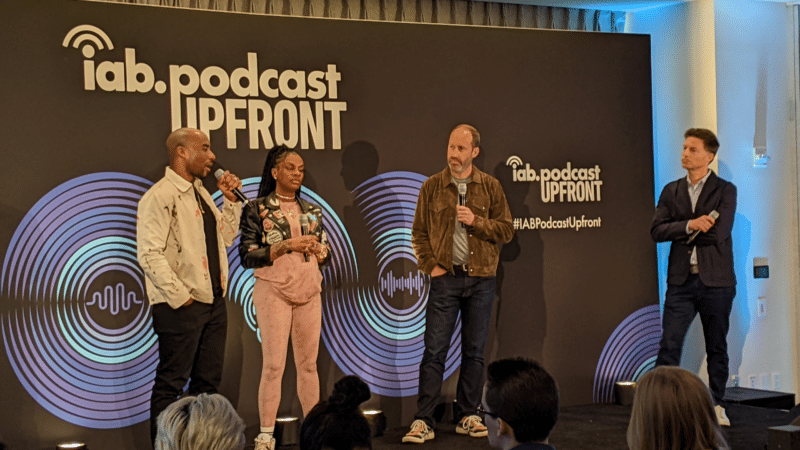
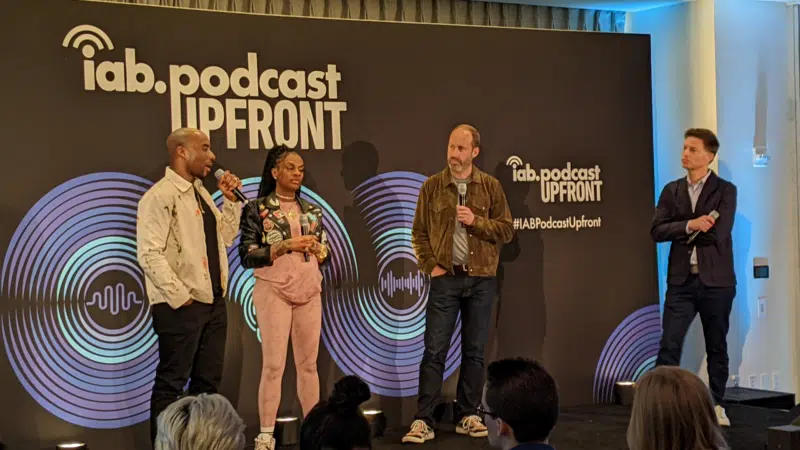
Podcasts are bouncing back from last year’s slowdown with digital audio publishers, tech partners and brands innovating to build deep relationships with listeners.
At the IAB Podcast Upfront in New York this week, hit shows and successful brand placements were lauded. In addition to the excitement generated by stars like Jon Stewart and Charlamagne tha God, the numbers gauging the industry also showed promise.
U.S. podcast revenue is expected to grow 12% to reach $2 billion — up from 5% growth last year — according to a new IAB/PwC study. Podcasts are projected to reach $2.6 billion by 2026.
The growth is fueled by engaging content and the ability to measure its impact. Adtech is stepping in to measure, prove return on spend and manage brand safety in gripping, sometimes contentious, environments.
“As audio continues to evolve and gain traction, you can expect to hear new innovations around data, measurement, attribution and, crucially, about the ability to assess podcasting’s contribution to KPIs in comparison to other channels in the media mix,” said IAB CEO David Cohen, in his opening remarks.
Comedy and sports leading the way
Podcasting’s slowed growth in 2023 was indicative of lower ad budgets overall as advertisers braced for economic headwinds, according to Matt Shapo, director, Media Center for IAB, in his keynote. The drought is largely over. Data from media analytics firm Guideline found podcast gross media spend up 21.7% in Q1 2024 over Q1 2023. Monthly U.S. podcast listeners now number 135 million, averaging 8.3 podcast episodes per week, according to Edison Research.
Comedy overtook sports and news to become the top podcast category, according to the new IAB report, “U.S. Podcast Advertising Revenue Study: 2023 Revenue & 2024-2026 Growth Projects.” Comedy podcasts gained nearly 300 new advertisers in Q4 2023.
Sports defended second place among popular genres in the report. Announcements from the stage largely followed these preferences.
Jon Stewart, who recently returned to “The Daily Show” to host Mondays, announced a new podcast, “The Weekly Show with Jon Stewart,” via video message at the Upfront. The podcast will start next month and is part of Paramount Audio’s roster, which has a strong sports lineup thanks to its association with CBS Sports.
Reaching underserved groups and tastes
IHeartMedia toasted its partnership with radio and TV host Charlamagne tha God. Charlamagne’s The Black Effect is the largest podcast network in the U.S. for and by black creators. Comedian Jess Hilarious spoke about becoming the newest co-host of the long-running “The Breakfast Club” earlier this year, and doing it while pregnant.
The company also announced a new partnership with Hello Sunshine, a media company founded by Oscar-winner Reese Witherspoon. One resulting podcast, “The Bright Side,” is hosted by journalists Danielle Robay and Simone Boyce. The inspiration for the show was to tell positive stories as a counterweight to negativity in the culture.
With such a large population listening to podcasts, advertisers can now benefit from reaching specific groups catered to by fine-tuned creators and topics. As the top U.S. audio network, iHeartMedia touted its reach of 276 million broadcast listeners.
Connecting advertisers with the right audience
Through its acquisition of technology, including audio adtech company Triton Digital in 2021, as well as data partnerships, iHeartMedia claims a targetable audience of 34 million podcast listeners through its podcast network, and a broader audio audience of 226 million for advertisers, using first- and third-party data.
“A more diverse audience is tuning in, creating more opportunities for more genres to reach consumers — from true crime to business to history to science and culture, there is content for everyone,” Cohen said.
The IAB study found that the top individual advertiser categories in 2023 were Arts, Entertainment and Media (14%), Financial Services (13%), CPG (12%) and Retail (11%). The largest segment of advertisers was Other (27%), which means many podcast advertisers have distinct products and services and are looking to connect with similarly personalized content.
Acast, the top global podcast network, founded in Stockholm a decade ago, boasts 125,000 shows and 400 million monthly listeners. The company acquired podcast database Podchaser in 2022 to gain insights on 4.5 million podcasts (at the time) with over 1.7 billion data points.
Measurement and brand safety
Technology is catching up to the sheer volume of content in the digital audio space. Measurement company Adelaide developed its standard unit of attention, the AU, to predict how effective ad placements will be in an “apples to apples” way across channels. This method is used by The Coca-Cola Company, NBA and AB InBev, among other big advertisers.
In a study with National Public Media, which includes NPR radio and popular podcasts like the “Tiny Desk” concert series, Adelaide found that NPR, on average, scored 10% higher than Adelaide’s Podcast AU Benchmarks, correlating to full-funnel outcomes. NPR listeners weren’t just clicking through to advertisers’ sites, they were considering making a purchase.
Advertisers can also get deep insights on ad effectiveness through Wondery’s premium podcasts — the company was acquired by Amazon in 2020. Ads on its podcasts can now be managed through the Amazon DSP, and measurement of purchases resulting from ads will soon be available.
The podcast landscape is growing rapidly, and advertisers are understandably concerned about involving their brands with potentially controversial content. AI company Seekr develops large language models (LLMs) to analyze online content, including the context around what’s being said on a podcast. It offers a civility rating that determines if a podcast mentioning “shootings,” for instance, is speaking responsibly and civilly about the topic. In doing so, Seekr adds a layer of confidence for advertisers who would otherwise pass over an opportunity to reach an engaged audience on a topic that means a lot to them. Seekr recently partnered with ad agency Oxford Road to bring more confidence to clients.
“When we move beyond the top 100 podcasts, it becomes infinitely more challenging for these long tails of podcasts to be discovered and monetized,” said Pat LaCroix, EVP, strategic partnerships at Seekr. “Media has a trust problem. We’re living in a time of content fragmentation, political polarization and misinformation. This is all leading to a complex and challenging environment for brands to navigate, especially in a channel where brand safety tools have been in the infancy stage.”
Dig deeper: 10 top marketing podcasts for 2024
MARKETING
Foundations of Agency Success: Simplifying Operations for Growth


Why do we read books like Traction, Scaling Up, and the E-Myth and still struggle with implementing systems, defining processes, and training people in our agency?
Those are incredibly comprehensive methodologies. And yet digital agencies still suffer from feast or famine months, inconsistent results and timelines on projects, quality control, revisions, and much more. It’s not because they aren’t excellent at what they do. I
t’s not because there isn’t value in their service. It’s often because they haven’t defined the three most important elements of delivery: the how, the when, and the why.
Complicating our operations early on can lead to a ton of failure in implementing them. Business owners overcomplicate their own processes, hesitate to write things down, and then there’s a ton of operational drag in the company.
Couple that with split attention and paper-thin resources and you have yourself an agency that spends most of its time putting out fires, reacting to problems with clients, and generally building a culture of “the Founder/Creative Director/Leader will fix it” mentality.
Before we chat through how truly simple this can all be, let’s first go back to the beginning.
When we start our companies, we’re told to hustle. And hustle hard. We’re coached that it takes a ton of effort to create momentum, close deals, hire people, and manage projects. And that is all true. There is a ton of work that goes into getting a business up and running.


The challenge is that we all adopt this habit of burning the candle at both ends and the middle all for the sake of growing the business. And we bring that habit into the next stage of growth when our business needs… you guessed it… exactly the opposite.
In Mike Michalowitz’s book, Profit First he opens by insisting the reader understand and accept a fundamental truth: our business is a cash-eating monster. The truth is, our business is also a time-eating monster. And it’s only when we realize that as long as we keep feeding it our time and our resources, it’ll gobble everything up leaving you with nothing in your pocket and a ton of confusion around why you can’t grow.
Truth is, financial problems are easy compared to operational problems. Money is everywhere. You can go get a loan or go create more revenue by providing value easily. What’s harder is taking that money and creating systems that produce profitably. Next level is taking that money, creating profit and time freedom.
In my bestselling book, The Sabbatical Method, I teach owners how to fundamentally peel back the time they spend in their company, doing everything, and how it can save owners a lot of money, time, and headaches by professionalizing their operations.
The tough part about being a digital agency owner is that you likely started your business because you were great at something. Building websites, creating Search Engine Optimization strategies, or running paid media campaigns. And then you ended up running a company. Those are two very different things.


How to Get Out of Your Own Way and Create Some Simple Structure for Your Agency…
- Start Working Less
I know this sounds really brash and counterintuitive, but I’ve seen it work wonders for clients and colleagues alike. I often say you can’t see the label from inside the bottle and I’ve found no truer statement when it comes to things like planning, vision, direction, and operations creation.
Owners who stay in the weeds of their business while trying to build the structure are like hunters in the jungle hacking through the brush with a machete, getting nowhere with really sore arms. Instead, define your work day, create those boundaries of involvement, stop working weekends, nights and jumping over people’s heads to solve problems.
It’ll help you get another vantage point on your company and your team can build some autonomy in the meantime.
- Master the Art of Knowledge Transfer
There are two ways to impart knowledge on others: apprenticeship and writing something down. Apprenticeship began as a lifelong relationship and often knowledge was only retained by ONE person who would carry on your method.
Writing things down used to be limited (before the printing press) to whoever held the pages.
We’re fortunate that today, we have many ways of imparting knowledge to our team. And creating this habit early on can save a business from being dependent on any one person who has a bunch of “how” and “when” up in their noggin.
While you’re taking some time to get out of the day-to-day, start writing things down and recording your screen (use a tool like loom.com) while you’re answering questions.


Deposit those teachings into a company knowledge base, a central location for company resources. Some of the most scaleable and sellable companies I’ve ever worked with had this habit down pat.
- Define Your Processes
Lean in. No fancy tool or software is going to save your company. Every team I’ve ever worked with who came to me with a half-built project management tool suffered immensely from not first defining their process. This isn’t easy to do, but it can be simple.
The thing that hangs up most teams to dry is simply making decisions. If you can decide how you do something, when you do it and why it’s happening that way, you’ve already won. I know exactly what you’re thinking: our process changes all the time, per client, per engagement, etc. That’s fine.
Small businesses should be finding better, more efficient ways to do things all the time. Developing your processes and creating a maintenance effort to keep them accurate and updated is going to be a liferaft in choppy seas. You’ll be able to cling to it when the agency gets busy.
“I’m so busy, how can I possibly work less and make time for this?”


You can’t afford not to do this work. Burning the candle at both ends and the middle will catch up eventually and in some form or another. Whether it’s burnout, clients churning out of the company, a team member leaving, some huge, unexpected tax bill.
I’ve heard all the stories and they all suck. It’s easier than ever to start a business and it’s harder than ever to keep one. This work might not be sexy, but it gives us the freedom we craved when we began our companies.
Start small and simple and watch your company become more predictable and your team more efficient.
-

 PPC6 days ago
PPC6 days agoHow the TikTok Algorithm Works in 2024 (+9 Ways to Go Viral)
-

 SEO6 days ago
SEO6 days agoBlog Post Checklist: Check All Prior to Hitting “Publish”
-

 SEO5 days ago
SEO5 days agoHow to Use Keywords for SEO: The Complete Beginner’s Guide
-

 MARKETING5 days ago
MARKETING5 days agoHow To Protect Your People and Brand
-

 PPC7 days ago
PPC7 days agoHow to Craft Compelling Google Ads for eCommerce
-

 SEARCHENGINES7 days ago
SEARCHENGINES7 days agoGoogle Started Enforcing The Site Reputation Abuse Policy
-

 MARKETING6 days ago
MARKETING6 days agoElevating Women in SEO for a More Inclusive Industry
-

 PPC6 days ago
PPC6 days agoHow to Brainstorm Business Ideas: 9 Fool-Proof Approaches


![The State of Content Marketing in 2022 [Stats & Trends to Watch] Engagement rate by video length copy](https://articles.entireweb.com/wp-content/uploads/2022/03/The-State-of-Content-Marketing-in-2022-Stats-Trends.jpg)
![The State of Content Marketing in 2022 [Stats & Trends to Watch] state of marketing](https://articles.entireweb.com/wp-content/uploads/2022/01/1643669478_422_Business-Leaders-Weigh-In-on-the-Future-of-Events.png)
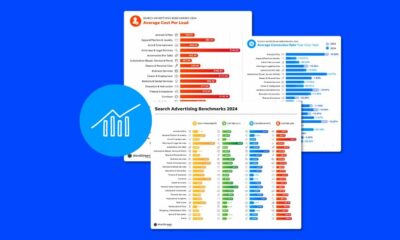







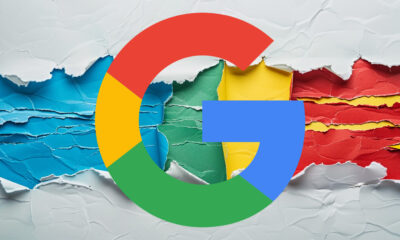

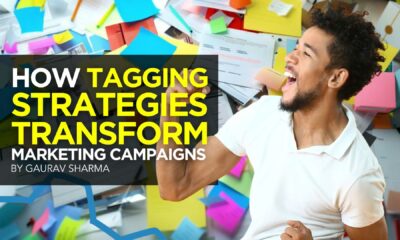



You must be logged in to post a comment Login